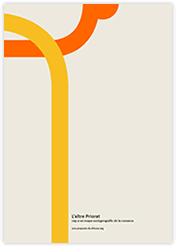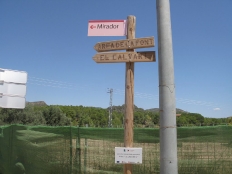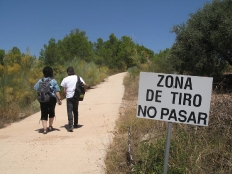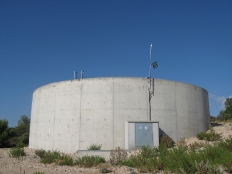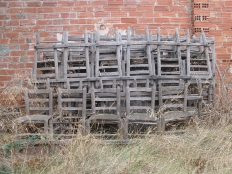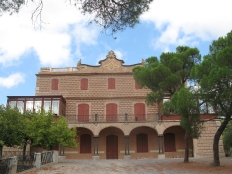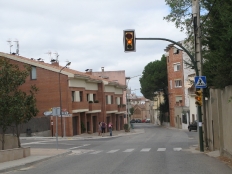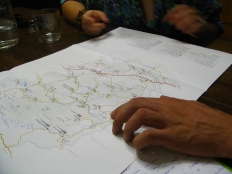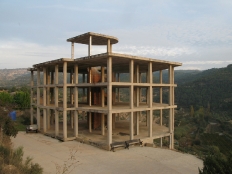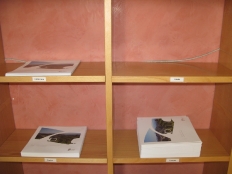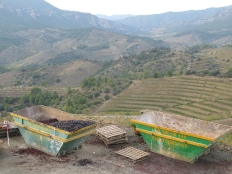L’altre Priorat
Work process
The Priorat is one of the most depopulated and impoverished regions of Catalonia. Despite this, it is a living region centered around three main axes: wine, landscape, and the energy sector, with a strong presence of local social movements. La Plataforma, which brings together environmental initiatives, works to protect the region’s landscape, ecological, and cultural heritage. One of the initiatives it is promoting is to request that the region be granted World Heritage status in order to protect its historically rooted ways of life.
With this reality, we are faced with two questions:
- Is a kind of Theme Park of the Authentic being constituted in the Priorat?
- What is on the other side of the coin?
Therefore, we propose to investigate the other side, we intend to reflect on the aspects that complement this, necessarily partial, version of the Priorat.
The research methodologies used in the process were as follows:
- Meetings with key informants.
- Online surveys
- Socio-geographic drifts
- Consultation of secondary sources of information
- Drafting of sketches
Key informant meetings
From the cultural and local social movements (Priorat centre d’art and Plataforma en defensa del patrimoni natural del Priorat.
Online surveys
The survey was conducted during October 2009, online, five questions to 85 people associated with the region.
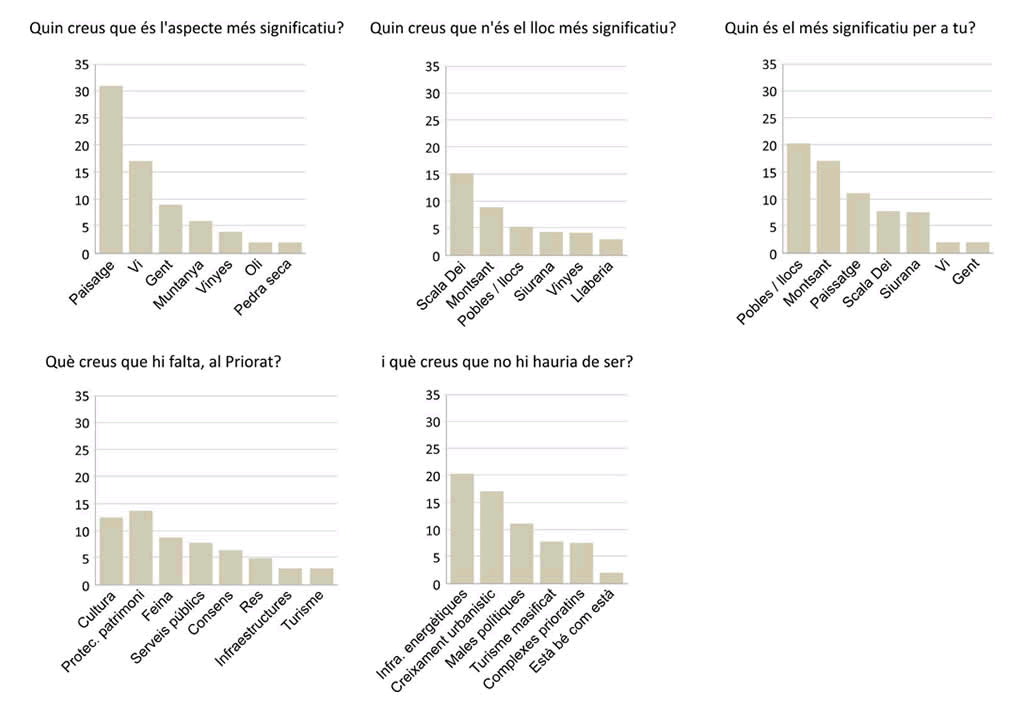
Socio-geographic drifts
Socio-geographic drifts are another important part of the research, as they have produced much of the graphic material and have allowed to configure the conceptual map, basic for synthesizing the information.
Drift is a procedure of psychogeography, a pseudo-science created by the Situationists in the late 1950s that aims to study the city transversally. According to Debord’s words,
“Drifting presents itself as a technique of uninterrupted passage through diverse environments. The concept of drifting is inextricably linked to the recognition of psychogeographical effects, and to the affirmation of a playful-constructive behavior, which opposes in all respects the classical notions of travel and walking”
(Theory of Drift, Guy Debord, 1958).
We have used the neologism “socio-geographic” to denote that our drifts have not been guided procedures by the emotions and sensations of the errant researcher, but by the emotions and sensations shared by a significant part of Prioratins, factors to which we must add chance and our decisions. The result, therefore, puts on the table the shared significance of various aspects of the territory.
First drift
We highlight the contact we could have with agents of the social and cultural movements of the area, which allowed us to refine our vision with everything related to landscape impacts: the windmills of Coll de la Teixeta, the water tanks of La Figuera, or the poor management of cultural heritage. We could also capture the massive presence of everything related to wine: wineries, vineyards, routes… as well as realizing the existence of the laundries on the outskirts of the villages and the Flors de Maig as culturally active nodes.
Second drift
We continued to deepen in the aspects that had already been awakened then: we visited the abandoned house of the Mines de Bellmunt, where there could have been the headquarters of the Priorat Centre d’Art; we paid special attention to the tanks, as landscape impacts but also as places where we could enjoy the abundant water (swimming…); In this second visit, some recurrent aspects appeared, such as the scarcity of graffiti and the abundance of walls, in addition to the only semaphore of Falset, which, moreover, we could verify that it is only used in amber. Finally, we went out through Coll d’Alforja, a place graced to observe the Montsant but that, as a counterpoint, suffers the collapse caused by a quarry.
The Third Drift
The researchers had already gathered the results of the surveys and other documentation, such as the Charter of the Priorat Landscape. They wanted to reproduce the main “points of observation and enjoyment of the landscape”. They went to see the points that were missing from those that people had highlighted as significant.
Siurana caught their attention: for its spectacular landscape but also for being the only place where they saw foreigners. Also, apart from the “contained nature” of Fraguerau, they made a discovery that condenses the current tensions of the Priorat: an skeleton of what was to be a hotel contemplating an imposing landscape. It also served to sketch some traits of the area’s character, such as the fact that they “avoid making vinegar”.
Elaboration of Sketches
The researchers created maps that incorporated various aspects: the results of the survey, the routes they followed, and other data.
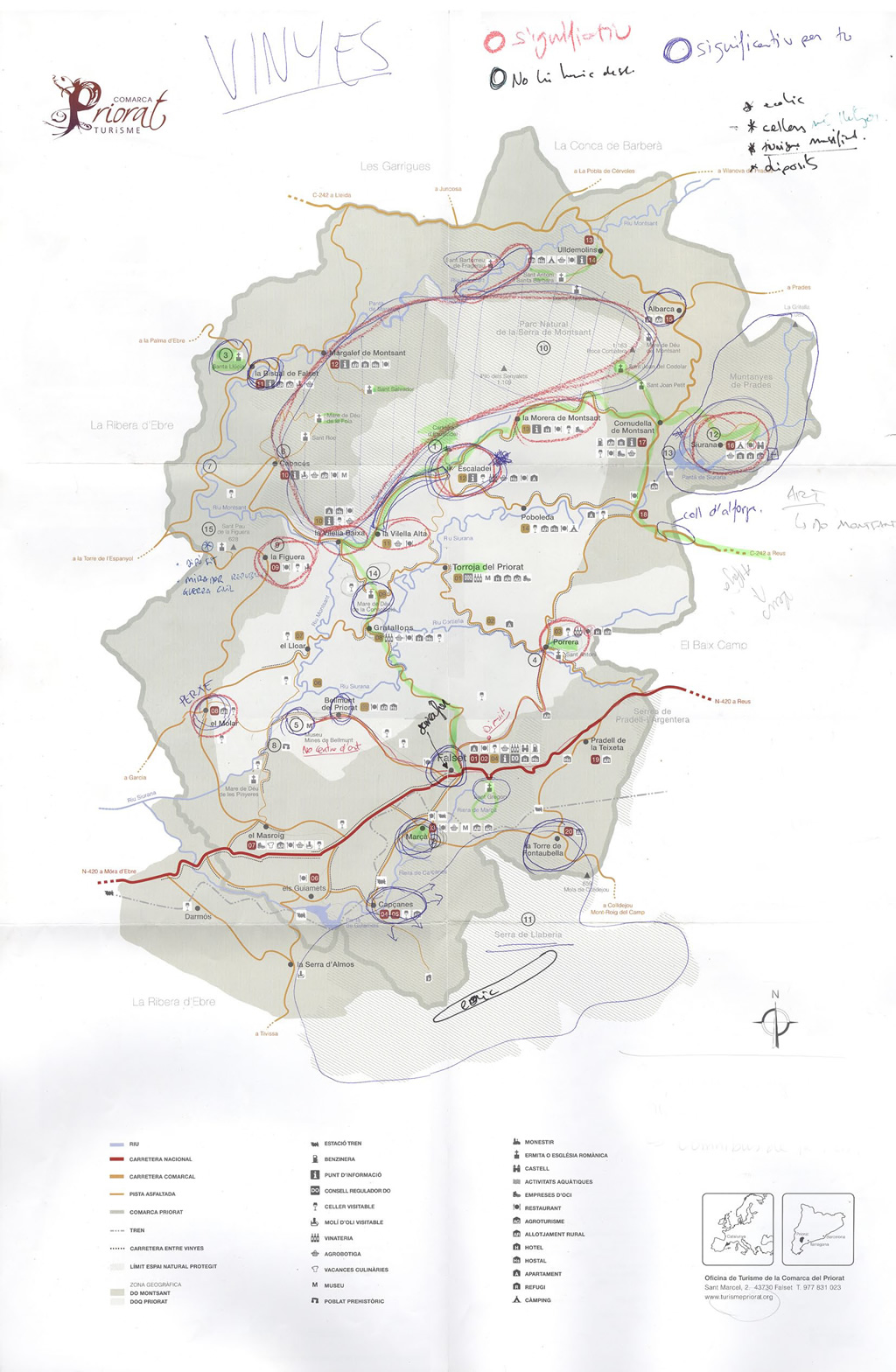
The following conceptual mind map brings together various photographs taken during the research, grouped thematically into categories ranging from what we saw as traits of the Priorat character, to others more related to landscape themes.

Final Results
Abstract map

This map is the most abstract, as it simply shows a relationship of colors and sizes geolocated on a background that does not define any specific territory.
Map of points of significance

This map is more informative, as it includes a legend and information from the Charter of the Priorat Landscape.
Pie charts map

This map groups the information into pie charts, where the size and color of the slices quantitatively complement the information.
Levels of significance map

This map abandons the statistical aesthetic to approach geography. Here, the darker areas denote the greater significance of the marked part.
Levels of significance map
Final map

This map incorporates the information that the researchers were unable to reflect in the other maps. Using signage and, above all, the examples in the right column and the results of the survey, they wanted to give a global idea of their work in the Priorat: a map, or a guide, that would serve to guide a gaze beyond wine.
Final mapt
Conclusions
